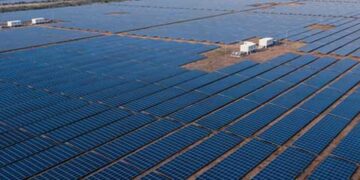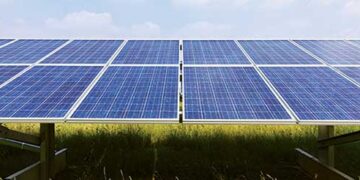Blitz Bureau
NEW DELHI: Just a decade ago, India’s solar landscape was in its infancy, with panels dotting only a few rooftops and deserts. Today, the nation has raced ahead to script history: India has officially surpassed Japan to become the world’s third-largest solar power producer.
According to the International Renewable Energy Agency (IRENA), India generated an impressive 1,08,494 GWh of solar energy, leaving Japan behind at 96,459 GWh.
India’s cumulative solar power capacity stood at 119.02 GW as of July this year. The country’s progress in the renewable energy sector reflects its focused policies and strategic planning under national leadership. As part of the pledge made at COP26, efforts are being directed towards reaching the target of 500 GW of non-fossil fuel electricity capacity by 2030.
High potential
India lies in the tropical region, with the Tropic of Cancer passing through many states. This gives the country a high potential for solar power generation. The total solar sector potential of the Indian continent is 748 GW. States/ UTs like Rajasthan, Jammu and Kashmir, Maharashtra, Madhya Pradesh, and Andhra Pradesh have some of the highest solar potential in the country, making them key drivers of India’s clean energy growth.
In July this year, India’s solar power capacity had increased by 4,000 per cent, and the country’s total renewable energy capacity reached 227 GW. India’s solar manufacturing sector includes key components like solar modules, solar PV cells, and ingots and wafers. Producing these within the country supports the domestic economy and reduces dependence on imports.
In just one-year, solar module manufacturing capacity nearly doubled – from 38 GW in March 2024 to 74 GW in March 2025. Similarly, solar PV cell manufacturing rose from 9 GW to 25 GW. A big milestone was the start of India’s first ingot-wafer manufacturing facility (2 GW), further strengthening the entire solar supply chain.
Policy support
This rapid growth in domestic capacity is strongly supported by Government policies. To promote Indian-made solar products, the Government has made it mandatory for projects under schemes like the Rooftop Solar Programme, PMKUSUM, and CPSU Scheme Phase II to use panels and cells made in India. It has launched several flagship initiatives to promote the adoption and development of solar energy across the country.
PM Surya Ghar: Muft Bijli Yojana: It’s a Central scheme with an outlay of Rs 75,021 crore to help one crore Indian households to get up to 300 units of free electricity every month by installing rooftop solar panels.
PM-KUSUM: The Pradhan Mantri Kisan Urja Suraksha Evam Utthaan Mahabhiyaan scheme supports farmers in using solar energy instead of diesel. Farmers can get a 30-50 pc subsidy to install new solar pumps or convert old pumps to solar.
Solar Parks scheme: The Government is running a scheme to set up large solar power plants connected to the electricity grid, with a target of 40 GW by March 2026. So far, 53 Solar Parks with a total capacity of about 39,323 MW have been approved in 13 states.
PM JANMAN: The Pradhan Mantri Janjati Adivasi Nyaya Maha Abhiyan was launched to address the development needs of Particularly Vulnerable Tribal Groups (PVTGs) through 11 critical interventions across nine ministries.
































